The stained glass José Ferreira was in poor condition in
the Chesf office. He was completely rusted, with broken glass and in a bad
location for a stained glass window, it did not receive light and even had
visibility. To make matters worse, he still suffered (in the 1990s) a botched restoration
and irresponsible where people put resin and acrylic pieces to pretend it was
glass, they also used lead fillets to hide broken glass. This tragic picture
was reversed thanks to Atelier Jobson Figueiredo and in 2010 finally Ferreira’s
stained glass received a real restoration.
The first step was to isolate its former area and assemble the building site in
its new location. After that, the stained glass (seven meters wide by two and a
half meters tall) was completely dismantled, with its fifty-six panels and a
total of five thousand and thirty-four glasses. All panels were photographed
and numbered for the preparation of the damage map, then stored in drawers made
to house them.
Dismantling stained glass revealed a metal structure completely eaten away by
rust and to solve it, were made new metal structures, now using stainless steel
instead of iron as a way to prevent rust. All new parts were made in the
workshop of Jobson Figueiredo in Igarassu under Severino Gomes command.
The panels removed passed through a washing process with water, kerosene, and
sodium bicarbonate. All were analyzed to detail the damage map, at that point, it was found the inheritance of previous "restoration". When the first
mistake was found, thought up it was an exception,
but with the analysis progress it was found that the number of
irregularities was so great that the neglect was a rule on the 1990s intervention.
The main errors are resin or acrylic parts which were placed instead of glass
and false lead fillets that attempt to hide broken glass pieces. Of course
everything was cataloged and filed for control, then this restoration by Jobson
(2009/2010) had to deal with the natural damage caused by time and with the
irresponsibility of unqualified people who had made the previous
"restoration".
With the damage map completely mounted, started the replacement
of broken, cracked parts or incorrect material, using a large catalog of colors
for glass, and also some lead fillet
replacements. This surely is the most labor step of the process as the
following work is done: thorough analysis of needs; piece disassemble; removal
of problematic parts; precise cutting of the new glasses with the correct shape
and colors; mounting of replacement parts; panel reassembly with new lead fillets;
mass applied to glass to seal it and finally the new cleaning.
After doing this service in all the panels, the final moment was assembling
stained glass in its new location. With the restoration completed and the
stained glass receiving light daily, all who pass by Chesf hall, in Bongi, were
impressed with the beauty of the work. New life to a artwork that was dying.
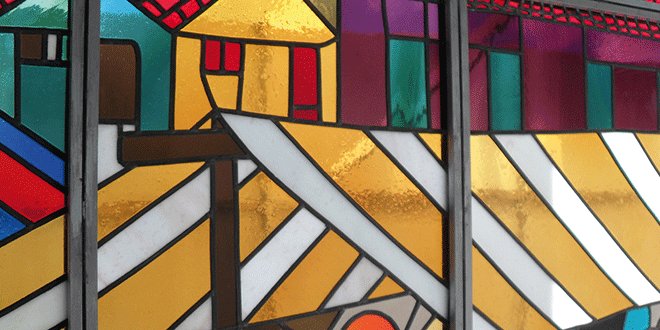 Detail of restored stained glass.
Detail of restored stained glass.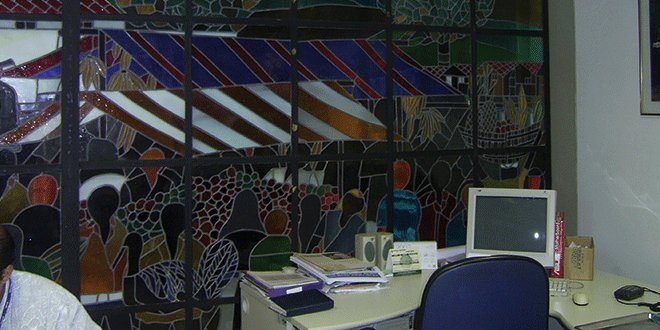 Decadent stained glass situation before restoration.
Decadent stained glass situation before restoration. Structure completely rusty.
Structure completely rusty.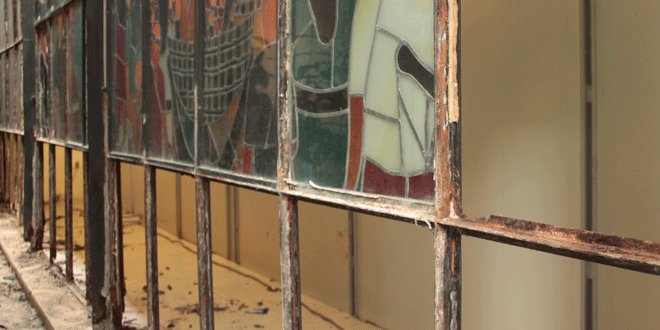 Beginning of stained glass dismantling.
Beginning of stained glass dismantling.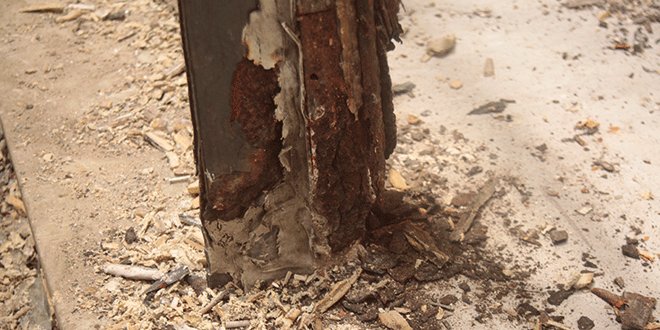 Damaged structure exposed.
Damaged structure exposed.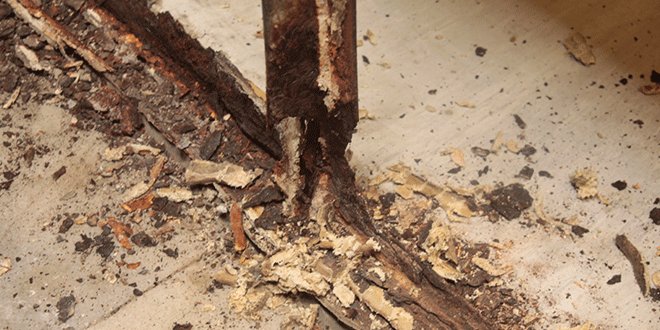 Rust on all metal parts.
Rust on all metal parts.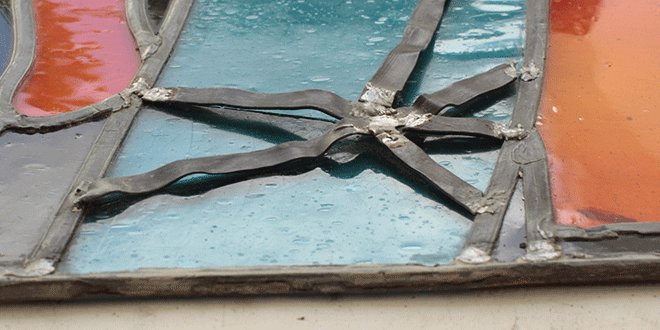 "Restoration" previously made by another company includes false pieces to hide broken glass.
"Restoration" previously made by another company includes false pieces to hide broken glass.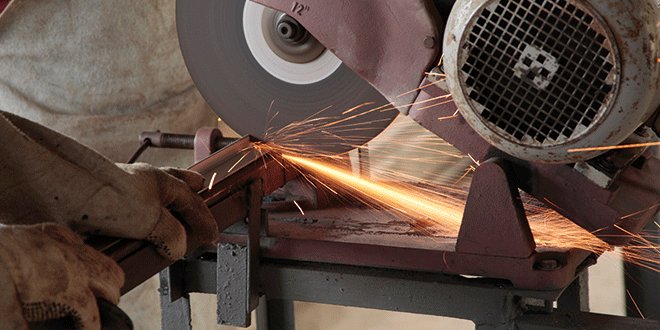 Start making new structures.
Start making new structures. Cutting corners.
Cutting corners. Welding gussets "T".
Welding gussets "T".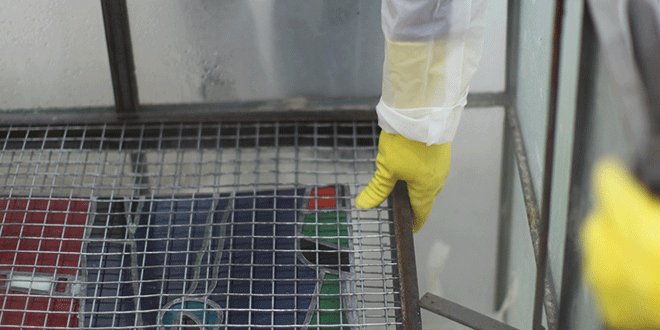 Cleaning process.
Cleaning process.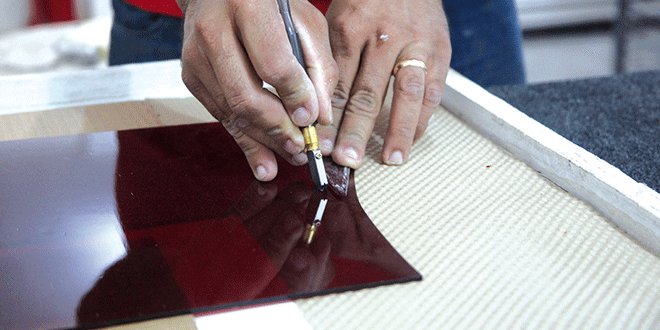 Production of new glass pieces.
Production of new glass pieces.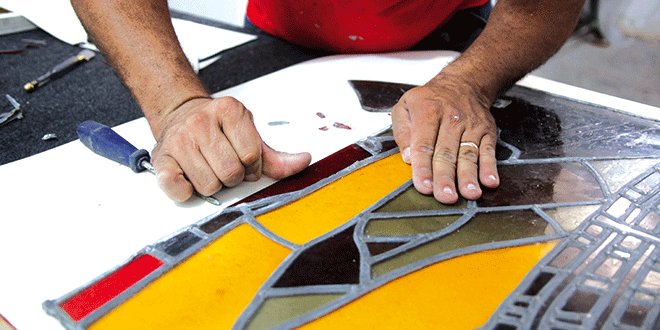 Placement of new parts.
Placement of new parts.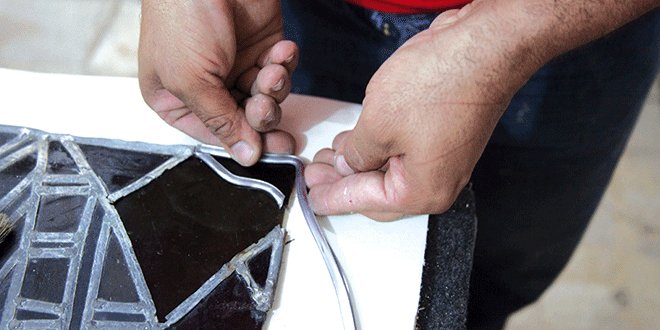 Placing new lead corners.
Placing new lead corners.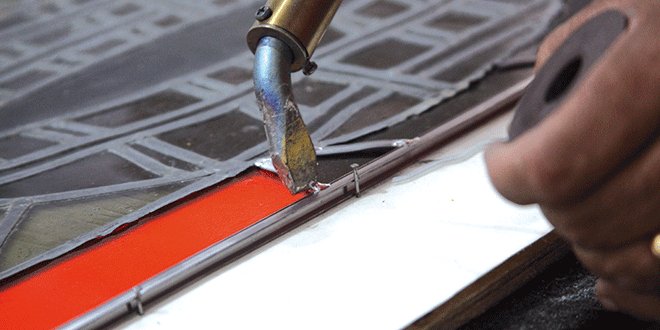 Solder lead structure.
Solder lead structure. Stained completely restored in its new location.
Stained completely restored in its new location.

